#digitalgov
Explore tagged Tumblr posts
Text
Celebrating wins: reflecting on the weeks of November 18-22
This week, our team is celebrating a few huge wins!
We finally presented a (beta version) of our insights report to our core team this week.
It’s currently a monster 155 page document since we had so much rich data from our deep discovery phase! Now that our analysis is complete and fully documented, we can draw from it to present to various audiences and - most importantly - use it as the basis for building out prototypes of our product!
Here’s a sneak peek at some slides, demonstrating the breadth of what’s covered in this report: a journey map that more accurately demonstrates the ways that applicants to MSP engage in the various touchpoints throughout the process; exploring the purpose behind certain steps and demonstrating where understandings are shared or divergent; and explaining how code can be used to streamline the process to be more opinionated in the way we collect data.
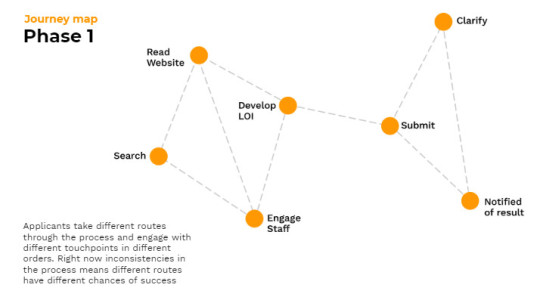
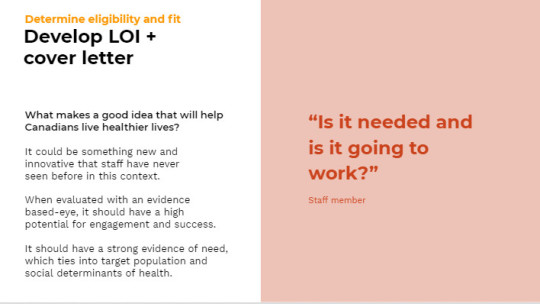
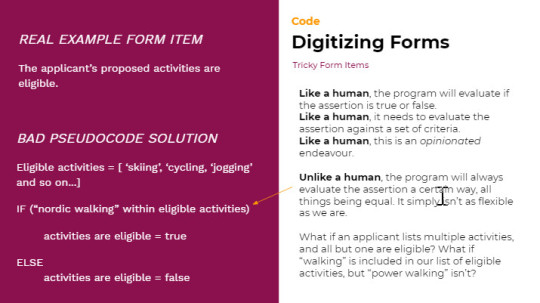
We’ll do a deeper dive into our research in another blog post soon, but for now, just know we’re pretty amped about it!
Another long-time-in-the-making milestone this week was finally getting set up for a trial instance with Apply by SurveyMonkey.
This is the Software as a Service (SaaS) solution that we’ve been leaning towards, and now we finally have an opportunity to play around with it - ie. the design, build, test part of our fellowship! We are so excited to be able to show staff more tangibly how digitization of the MSP program can improve the applicant experience, while making their own lives easier, too.
So far, Adam’s been exploring how to create different projects within it...with some existential dummy data (very On Brand for him).
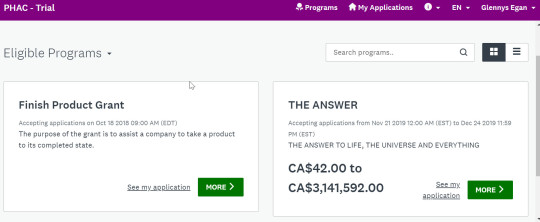
The final big milestone we hit this week was the official receipt of the Options and Analysis that had been initiated some months back by Health Canada Corporate Services in order to determine which back-end system we’d be integrating with. As you’ll know if you’ve been following our project, we are now pushing for an end-to-end solution - Apply - but it took us some time to convince Corporate Services that this was the right direction. The Options and Analysis documentation is the first step in having them support us to go in this direction and perhaps socialize SaaS solutions more broadly throughout Health Canada, when appropriate. Fingers crossed!
And, on that note, we are going to finish our big week off right by heading out for a drink together. Team building and celebrating successes are important, ya know?!
Glennys, Product Manager
#civic tech#civictech#digital government#digitalgov#product design#uxresearch#code4canada#code4all#codeforcanada#gcdigital
1 note
·
View note
Text
CLOUD GOVERNANCE
Cloud reception is expanding quickly to speed up IT modernization. IT spend on cloud is relied upon to develop over multiple times the overall IT spend planned generally. Cloud governance is a central component for cloud reception to scale and be effective. Cloud reception without cloud administration prompts disappointment. This article clarifies the significance of cloud governance for successful cloud reception and explains the different components of cloud administration.
Cloud governance is the framework coordinated towards controlling business exercises by giving information security, information to the executives, and approved admittance and modification of data to keep away from functional and monetary misfortune. It likewise aids hazard the executives related with distributed computing. Cloud governance gives the arrangement of standards to the administration for the powerful and productive working of the framework. It empowers the accomplishment of the targets of the association. The proficient usage of assets helps in the decrease of the expense.
Governance Policy in Cloud
The cloud is helpless against different dangers created in the innovative climate. There is a need to control these dangers. The administration strategy gives an administrative system to the undertaking, controls, and screens any deviation from the authoritative objectives.
The governance strategy works with hazard the board. It advisers for accomplish the business goals without compromising the investors' necessities. It empowers the ideal use of the cloud foundation. Administration strategy guarantees that the administration is responsible, viable, and consistent with the system. The strategy alludes to the guidelines of working stages, applications, exercises on the working stage, working frameworks, and distributed computing essential help models.
Key Components of Cloud Governance
Cloud Business Office (CBO) guarantees the arrangement of cloud vision with business vision and guarantees that administration is enforced across the undertaking. CBO is additionally answerable for requests to the board, cost advancement, and prioritization.
Cloud governance association design and jobs and obligations.
Cloud governance measures around the cloud service lifecycle.
Cloud primary parts like cloud reference engineering, principles, layouts, rules, best practices, and strategies.
Principles of cloud governance
Compliance with strategies and norms: Cloud utilization guidelines should be predictable with guidelines and compliance principles utilized by your association and others in your industry.
Arrangement with business goals: Cloud procedure ought to be a necessary piece of the general business and IT methodology. All cloud frameworks and strategies ought to verifiable uphold business objectives.
Joint effort: There ought to be transparent arrangements among proprietors and clients of cloud infrastructure, and different partners in the important organizational units, to guarantee they make suitable and commonly valuable utilization of cloud assets.
Change the board: All progressions to a cloud climate should be carried out in a reliable and normalized way, subject to suitable controls.
Dynamic response: Cloud governance ought to depend on observing and cloud mechanization to dynamically respond to occasions in the cloud climate.
0 notes
Text
Policy and Rules as Code
Policy is central to what governments do. It allows us to align on intention and make decisions based on principles and procedures.
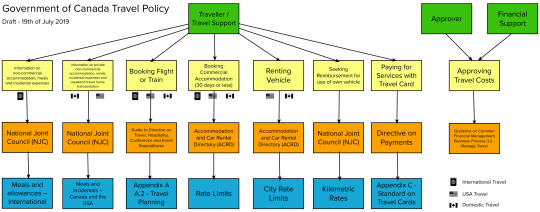
When researching travel policy, I found an overwhelming amount of information. There was so much information between policies, directives, standards and guidelines I found it difficult to know where to start.
Rules as Code
At this point, I was already thinking "Wow, wouldn't it be great if we could centralize all of this information and make it available as an API?"
As it turns out, there's a global movement already heading in this direction. In Ottawa, Scott McNaughton is leading an initiative to offer pilots as proof of concept on Rules as Code. Our friends at Code for Australia are also working on a project with the New South Wales government. The French Government are also implementing rules of code with OpenFisca.
What is Rules as Code?
Rules as Code is converting "prescriptive conditions found in legislation and policy" into logical rules. This means that decisions can be made in an 'if this, then that' fashion.
Instead of a human having to read and interpret rules, a computer will be able to determine if a policy requirement is met by considering parameters and responding with a true/false answer, at which time the system can act on that information.
Centralise & Standardise - One Source of Truth
Many current systems are designed to incorporate rules and can be configured to make decision based on policy. Rules as Code takes this one step further. We can centralise and standardise the format of policy via an API (application programming interface) and create 'one source of truth', meaning that any system that is integrated can be current, without requiring system-level updates.
What it Means for Travel
Processes involved in requesting, approving, and booking travel are entwined with policy, requiring users to reference and research.
Rules as Code introduces the possibility of querying policy as part of a system's workflow, automating policy decisions and taking the cognitive load off the user.
Adoption
Is Rules as Code an interpretation of existing policy or does it require drafting policy alongside French and English?
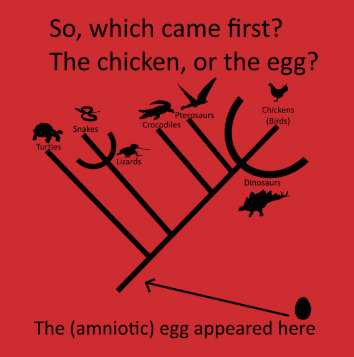
Expressing policy as code gives us the ability to think in an intermediate language, which is inherently based on decision making. By thinking in logical terms first, it forces us to consider an outcome. Natural language explaining it may become more concise and definitive.
The conversion of policies developed over hundreds of years is a mammoth task. The technical side of Rules as Code is relatively simple, but pushing through the bureaucracy surrounding policy and equipping policy makers with skills to think in code is an ambitious undertaking.
Thinking Big
Rules as Code has huge potential. If it reached the point of being a standard in government it would have a huge impact on how policy is used and perceived.
What do you think of Rules as Code? Is it the next big thing for policy?
-Mike, Software Development Fellow - Code for Canada
6 notes
·
View notes
Text
Tweeted
This is cool, https://t.co/NQnz2dVOdd "Meet the network tearing down walls between departments in Taiwan. Public servants from different ministries meet to redesign services and hash out policy change". #digitalgov
— Pia Andrews (@piawaugh) September 6, 2018
0 notes
Text
a tweet from @RyersonLibDME
Best practices and lessons learned in #digitalgov from practitioners around the world – check out this great reading list from @apoliticalco to start off the week! 📚https://t.co/tkTDgkJp4n
— Civic Hall Toronto (@CivicHallTO) November 19, 2018
0 notes
Text
15 August 2018
Graphic content
Cities
Vienna overtakes Melbourne as the world’s most liveable city(The Economist)*
American Violence
A New Data Tool Chronicles the Shifting Murder Rates of American Cities (The Trace)
The deadliest city: Behind Chicago’s segregated shooting sprees (Axios)
Which cities are liveable without air conditioning – and for how much longer? (The Guardian)
Everything else
The many contradictions in Trump’s relationship with Russia(Washington Post)*
Disturbi alimentari: le cure che mancano (on eating disorders - La Repubblica, via in other news)
Watching the ships go by (Alasdair Rae, via in other news)
Meta data
#dataviz
Here comes a thread on the "streamgraph" chart type used in the @FinancialTimes graphic on Premier League shirt sponsors - and part 2 (John Burn-Murdoch)
How to make a Sankey or alluvial diagram in Flourish (Flourish)
Nice technique: project your line chart or area chart down to a binary timeline (via Maarten Lambrechts)
#digitalgov
A pattern and process library for local government (Phil Rumens)
ICO appoints tech policy and innovation lead (UKAuthority)
What will Liam Maxwell’s departure from government mean for digital? (Computer Weekly)
And finally...
Pie growth (wtfviz)
Today's email compiled by @GavinFreeguard.
Links followed by an asterisk may be subject to a paywall or require registration.
0 notes
Text
New Post has been published on Government Aggregator
New Post has been published on http://governmentaggregator.com/2018/05/04/value-federal-government-data-digitalgov-building-21st-century-digital-government/
The Value of Federal Government Data / DigitalGov - Building the 21st Century Digital Government
The U.S. federal government is probably the one of the biggest (if not the biggest) producers of data. Every day, thousands of federal workers collect, create, analyze, and distribute massive amounts of data from weather forecasts to economic indicators to health statistics. Federal government data is a major driver of the American economy as businesses use the data to make decisions or blend the government data into products and services sold to consumers.
Source: The Value of Federal Government Data / DigitalGov – Building the 21st Century Digital Government
0 notes
Text
RT @InsightBrief: #CivicTech vs. #GovTech: a comparison https://t.co/GmCQBmB9Wq via @citizenlabco #digitalgov https://t.co/H2fHzl0EKm
#CivicTech vs. #GovTech: a comparison https://t.co/GmCQBmB9Wq via @citizenlabco #digitalgov http://pic.twitter.com/H2fHzl0EKm
— InsightBrief (@InsightBrief) November 26, 2017
via Twitter https://twitter.com/Lomonpla November 26, 2017 at 02:24PM
0 notes
Text
Drowning in Data (but in a good way!)
Hello! You haven’t heard from us in a while because we’ve been focused on publishing our first official Code for Canada blog, were at our first Code for Canada Fellow retreat, and have been absolutely drowning in data. But these are all good things!

Code for Canada Fellows goofing around at our first retreat.
We wanted to give a quick check-in on where we are with our discovery research and data analysis, so you know why we’ve been quiet.
During the UX research phase, we completed:
More than 30 hours of interviews, including with past, current and potential applicants, staff, and stakeholders
Two design probes breaking down the Letter of Intent template
Analysis of the contents of the PSD inbox, which is often the first point of contact for applicants interested in the program
Observational studies of PHAC processes and ways of interacting with applicants
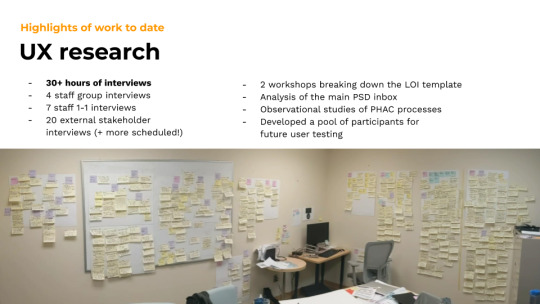
Slide from our most recent Project Panel presentation, where we gave an update about our work, including our UX research process.
As you can see from the walls in our office (and even the filing cabinet), where more than 500 are posted, this has given us at least a thousand data points! We’ve been working hard on collating, synthesizing, and analyzing that data. My dog, Boris, helped.
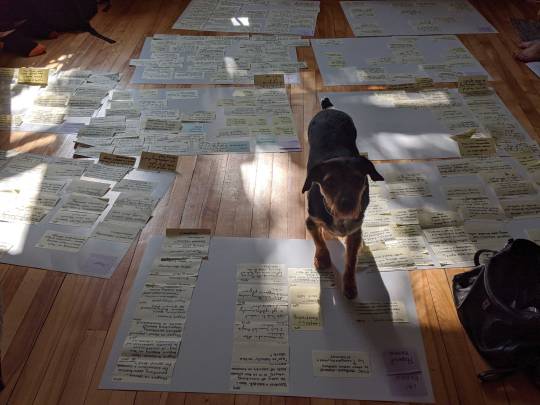
My sweet dorkie (no, actually, that’s his breed) dog dorking out with us during data synthesis.
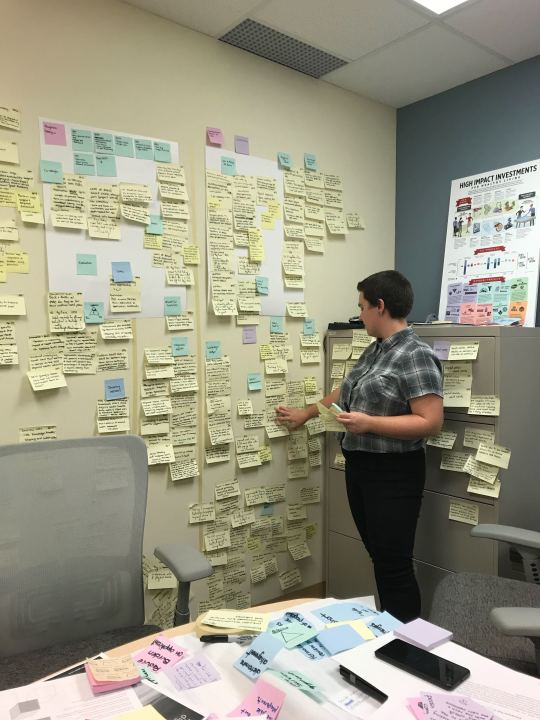
Rose working on analyzing our data points, which have spilled over from the walls to the tables and filing cabinets. Oof.
In the next week or two, we’ll be delivering an insights report that identifies key areas of opportunity to streamline the MSP program’s application process for users, as well as make it more accessible to the types of innovative organizations across the country that it intends to serve.
- Glennys, Product Manager
#civictech#digital government#gcdigital#digitalgov#Digital Transformation#codeforcanada#CodeForAll#code4all#code4canada
1 note
·
View note
Text
Tweeted
The Data Briefing: Federal Government Pioneers in Virtual Reality/Augmented Reality Training https://t.co/ZTr2DvJwzw #digitalgov
— Goyun Info (@GoyunInfo) August 10, 2017
0 notes
Text
RT xeroxevents DGIevents #Xerox looks forward to seeing you at #digitalgov #Emp, Brian Ruiz, TheBrianRuiz #Xerox #Print #Printing #InkJet #…
RT xeroxevents DGIevents #Xerox looks forward to seeing you at #digitalgov #Emp, Brian Ruiz, TheBrianRuiz #Xerox #Print #Printing #InkJet #…
— Brian Ruiz (@TheBrianRuiz) March 21, 2017
via Twitter https://twitter.com/TheBrianRuiz March 21, 2017 at 09:00AM
0 notes
Text
Changing the Knowledge Management Tides and Why it Matters: The Federal HR Wiki
Changing the Knowledge Management Tides and Why it Matters: The Federal HR Wiki
Imagine this – a go-to member of your organization just retired, a furlough is approaching, and now no one knows what to do. What communications need to go out? Who is considered ‘excepted’? Can the daycare center stay open? In the absence of mind-melds, how do you make expert knowledge easily accessible to newer team members? The Strategic Initiatives Group (SIG) at the National Institutes of…
View On WordPress
0 notes
Photo

Announcing History Hub from the National Archives!
We're excited to announce our new pilot project!
Do you have research questions you’ve always wanted answered? Do you want advice on how to get started with genealogical research?
Now you can ask them on the History Hub.
History Hub is a pilot project, connecting experts at the National Archives, researchers, and the public with discussion boards, blogs, profiles, and other interactive tools for communication and collaboration. The History Hub provides us a platform for eventually working with other cultural organizations—such as the Smithsonian and the Library of Congress—to offer the public a one-stop shop for crowdsourcing information.

The History Hub is a limited six-month pilot project so that we can test the platform for its use and usefulness as a crowdsourcing platform. For the pilot, we are working on a narrow set of topics that have been identified as good test cases for this platform, including genealogy and Native American research.
Do you have research questions you’ve always wanted answered? Do you want advice on how to get started with genealogical research? Give it a try and ask a question at historyhub.archives.gov.
262 notes
·
View notes
Text
New Post has been published on Government Aggregator
New Post has been published on http://governmentaggregator.com/2018/05/02/new-usagov-program-aims-help-agencies-market-within-federal-government-digitalgov-building-21st-century-digital-government/
New USAGov Program Aims to Help Agencies Market Within the Federal Government / DigitalGov - Building the 21st Century Digital Government
All government agencies have a common goal: to serve the public. As the front door to government information and services, we help agencies achieve this goal. We strive to make it easier for the public to find what they need by aggregating and disseminating information about government programs and services.
Source: New USAGov Program Aims to Help Agencies Market Within the Federal Government / DigitalGov – Building the 21st Century Digital Government
0 notes
Text
Reflections on week of July 29 - August 2, 2019

As I look at the ~Good~ section from Friday’s retro (yes, this blog is late!), two words stick out at me that I think sum up most of what we spent the week doing, in different way: learning and building.
Literally, that post-it was referring to what our developer, Adam, accomplished over the last sprint, in terms of learning how to make full-stack applications and building out a web application portal in prototype form. Which is awesome (see: “Adam built a thing!”)!!!
But I also see learning and building as something we did in other important ways.
We built out our research plan and started laying the foundations for actually conducting User Research - which is easier said than done, given the breadth of users we’re looking to talk to and the geographies that they’re spread across!
We built relationships with many key people who will support us in our project, including other UX designers in the government who can help us with user testing, a Director at the Centre for Grants and Contributions who will help us address blockers, and a whole host of folks at Natural Resources Canada who are hosting a knowledge sharing session for us this week.
We also learned more about working together as a team - which, as our colleague Maddy explained in her recent blog post - is super important and also takes time to get right!
After a restful long weekend, our team is back and ready to dive in to taking these things to the next level. Wish us luck!
- Glennys, Product Manager

1 note
·
View note